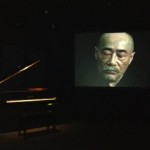 In October 2006 while I was on a National Endowment for the Arts Fellowship at the Columbia Journalism School for classical music and opera journalists, a New York University professor — I forget his name — came to Columbia to talk about research he was doing on the subject of ‘How We Listen.’
In October 2006 while I was on a National Endowment for the Arts Fellowship at the Columbia Journalism School for classical music and opera journalists, a New York University professor — I forget his name — came to Columbia to talk about research he was doing on the subject of ‘How We Listen.’
He asked our group to describe the process of listening to music. It seemed like a simple enough request. But try as we might, we couldn’t articulate what actually happens inside us as we take in sound and process it. We were forced to come to the unsatisfactory conclusion that we couldn’t do much more than regurgitate technical information about the mechanics of the human ear concerning sound waves and vibration and firing neurons and so on.
I found myself recalling this memory as I experienced Where is Chopin?, a new video and music work by Stanford music professor Jaroslaw Kapuscinski. The installation opened at the university’s Cantor Arts Center yesterday and runs through March 3.
Kapuscinski trained as a classical pianist and composer in Chopin’s hometown of Warsaw and has been deeply influenced by the nineteenth century master. Where Is Chopin?  is a 31-minute, three-channel video projection accompanied by Kapuscinski’s reworkings of Chopin’s 24 Preludes emitted on a self-playing grand Disklavier piano positioned near the three screens.
The music alone serves as a profound homage to Chopin, with its exploitation of specific harmonic progressions and snatches of melody to create fresh takes on the Preludes. Kapuscinski’s pieces are as instantly recognizable as Chopin’s work as they are the passionate response of a fan’s.
However, it’s the relationship between what the ear hears and what the eye sees on the screens that caused the NYU professor’s question “How do we listen?” to fly back into my head.
As the music plays, Bill Viola-esque close-up portraits of varied listeners from 12 cities around the world move before our eyes. As the faces on the screen, caught in slow motion, react to what they’re hearing, their faces and torsos change. Sometimes they have rapturous looks on their faces. Sometimes surprise. Sometimes terrible sadness. The changes are often subtle and occasionally radical.
Kapuscinski found his subjects in Tokyo, San Francisco, Mexico City, Sydney, Seoul, Beijing, Istanbul, Jerusalem, Helsinki, Buenos Aires, Wellington and Santiago, and collaborated with local photographers or cinematographers to make the films. According to the Cantor Center website, the variety of subjects was aimed at better understanding the “psychological, perceptual and cognitive processes of music.”
What I saw as I watched faces of all shapes, colors and ages move almost as if in a dream across the screens, was the process of people listening. There it was, palpable, for the first time since I first thought about this inscrutable process. I still can’t put exactly what I saw into words. But experiencing Kapuscinski’s installation is the closest I’ve come to being able to get a sense at what the NYU professor was driving at when he asked that class of classical music and opera journalists a difficult question back in 2006.
